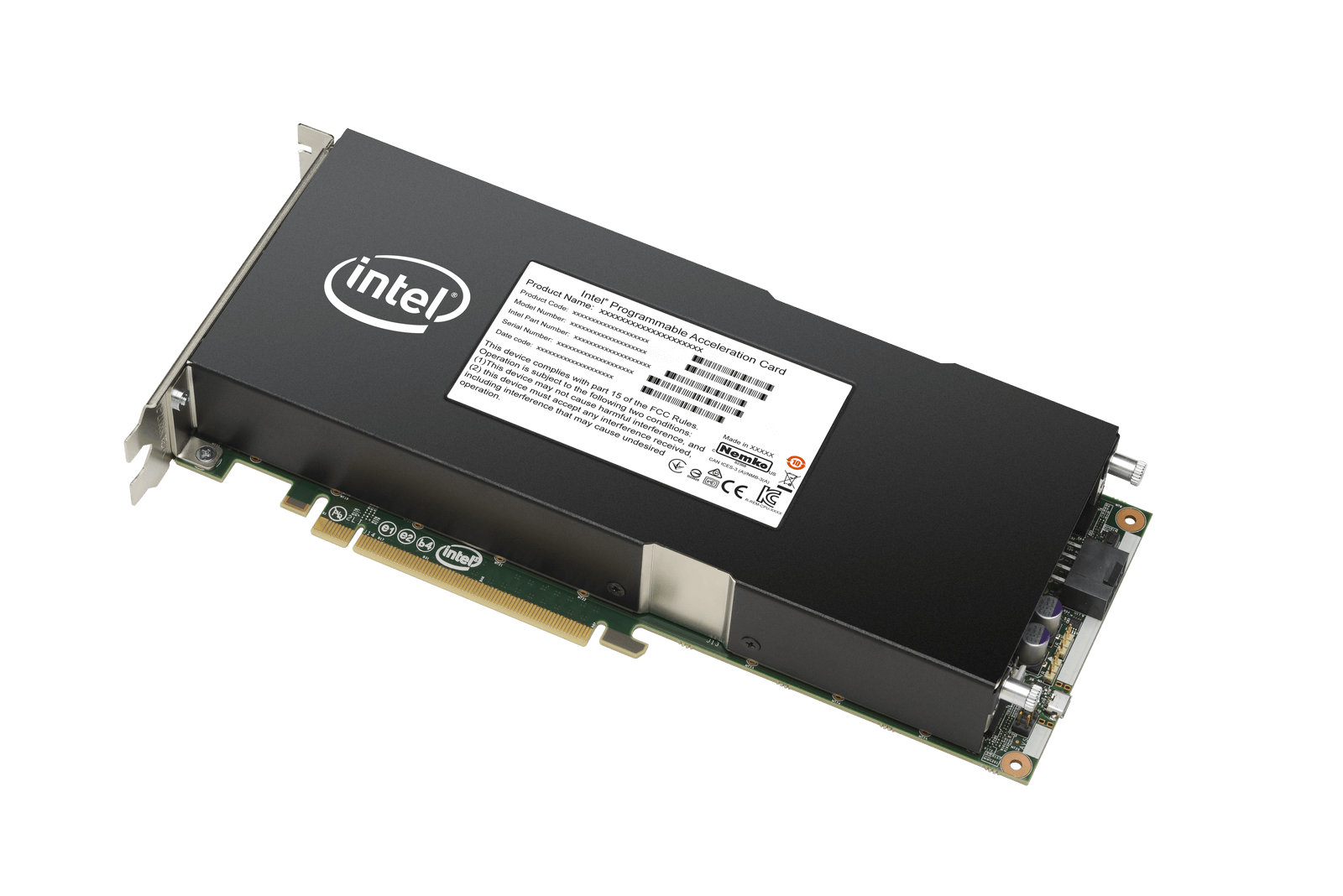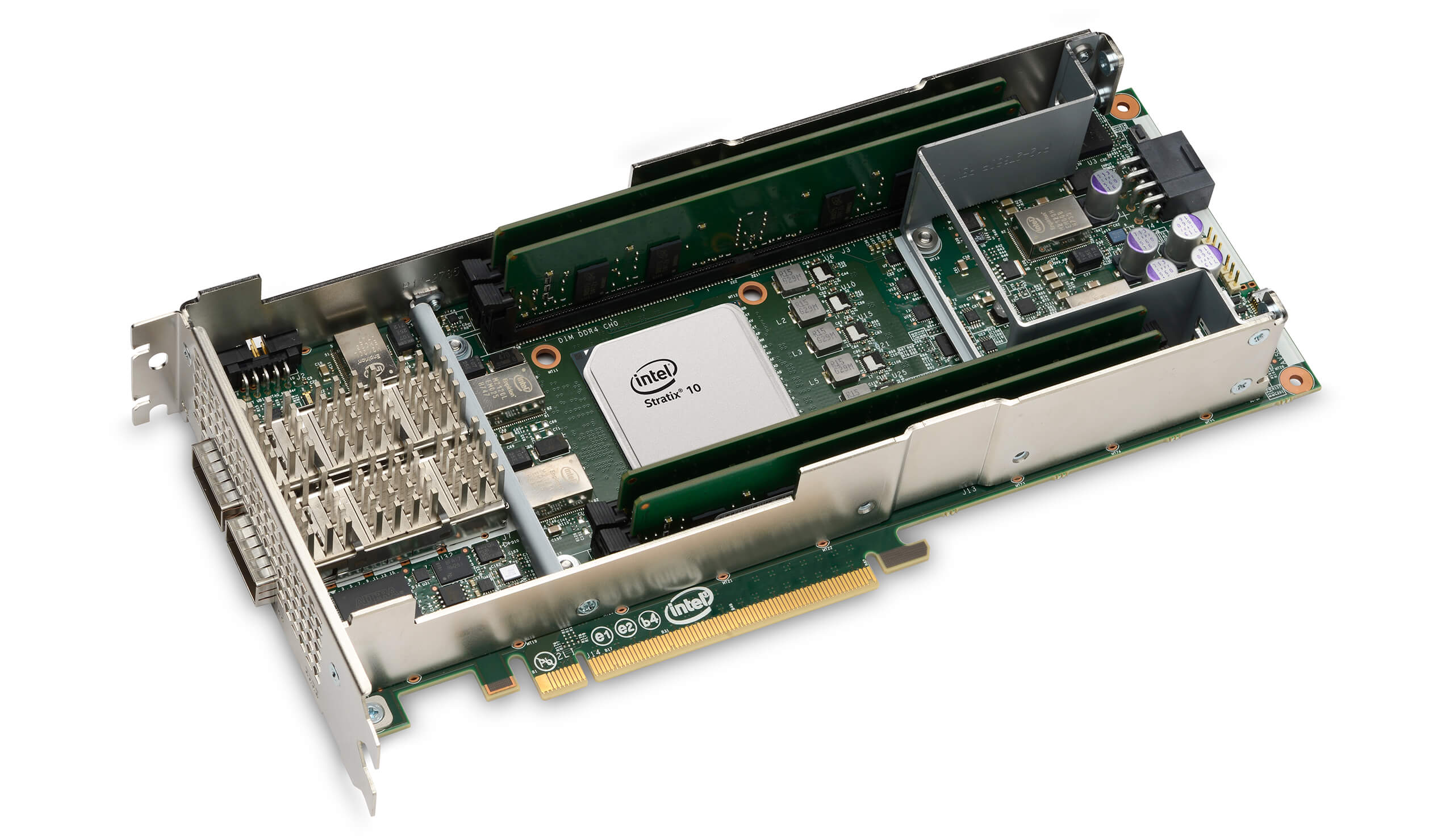In context: Field Programmable Gate Arrays are able to significantly outperform general purpose processors while consuming less power when setup to run specific tasks. Intel's debut of the Stratix 10 brings hardware acceleration with high-bandwidth capabilities and plenty of memory for tasks that are extremely taxing on more traditional hardware.
Traditional general purpose CPUs are no longer as useful for certain applications. Intel has been the dominant brand found across data centers for decades now and has a new gadget to show off. The Intel Stratix 10 FPGA card brings high-bandwidth capabilities and is easily programmable through a familiar solution stack.
Arriving as a three-quarter length, dual slot PCIe expansion card, the form factor allows for up to 225W of power consumption. Under the shroud, the Stratix 10 contains 2.8 million logic elements that can be used to run hardware accelerated applications. With the ability to run software from standard frameworks and high-level compilers, this FPGA is one of the only available that is able to be fully utilized by non-engineers.
The Stratix 10 series achieved an astounding 10 trillion calculations per second back in April. Now, Intel's programmable acceleration card with Stratix FGPA makes installation alongside Xeon processors possible.
Although it still is not possible to see massive performance gains just by recompiling a standard program written for standard server use, ease of development cannot be overstated and is uncommonly found when working with specialty hardware. The acceleration stack for Intel Xeon CPUs with Intel FPGAs provides an abundance time-saving features.
At the data center level, video transcoding, streaming analytics, and risk management have become extremely difficult tasks due to bandwidth limitations. Research into AI and genomics are also on the edge of previous hardware capabilities. Intel's Stratix 10 features not just one, but two QSFP 100G ports over PCIe Gen3 x16 for superior throughput. Processing enormous amounts of video and handling other memory-intensive tasks is no problem with a standard 32GB of DDR4 memory across four channels.

Intel has already partnered with HP Enterprise as an initial cloud provider for access to the Stratix 10 FPGA. Adaptive Micro-Ware specializes in video encoding solutions and will be using Intel's latest hardware to accelerate workflows. Also acting as a key partner, Megh Computing will be delivering real time analytics with the help of the Stratix 10.
Those interested in obtaining access to the Stratix 10 programmable acceleration card will be able to rent compute time from select OEMs or may contact Intel representatives for other options. A storefront with common workloads will be available for evaluation purposes. The Stratix 10 is expected to be available via OEMs in the first half of 2019.
